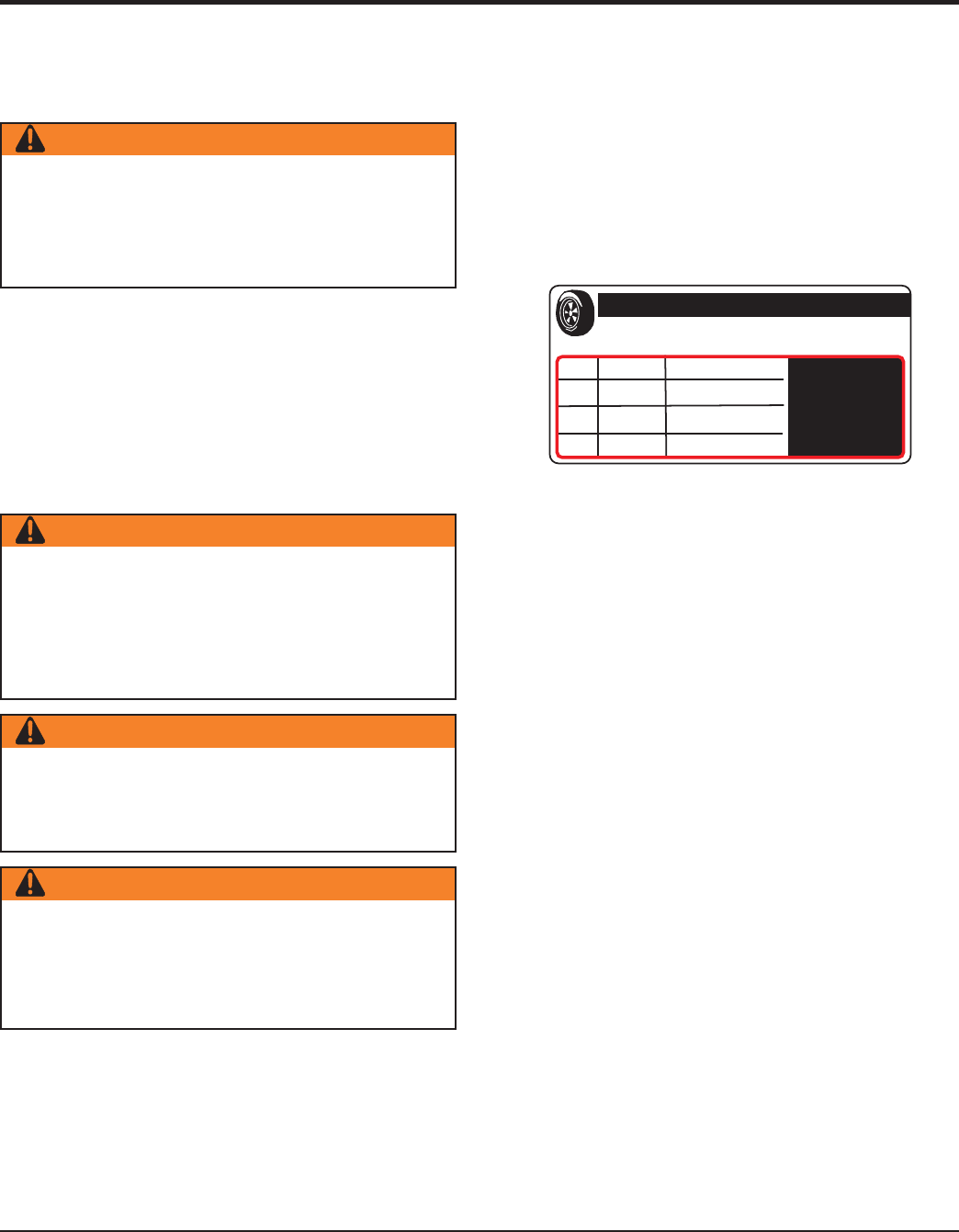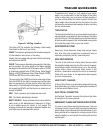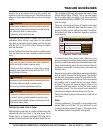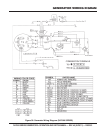
DA7000 SERIES GENERATORS • OPERATION AND PARTS MANUAL — REV. #5 (01/20/11) — PAGE 47
TRAILER GUIDELINES
wrench, use a lug wrench (from your tow vehicle) and
tighten the nuts as much as you can. Then have a service
garage or trailer dealer tighten the lug nuts to the proper
torque.
Lug nuts are also prone to loosen after first being
assembled. When driving a new trailer (or after wheels
have been remounted), check to make sure they are tight
after the fi rst 10, 25 and 50 miles of driving and before
each tow thereafter.
Failure to perform this check can result in a wheel parting
from the trailer and a crash, leading to death or serious
injury.
Determining Load Limit of Trailer
Determining the load limits of a trailer includes more than
understanding the load limits of the tires alone. On all
trailers there is a Federal certifi cation/VIN label that is
located on the forward half of the left (road) side of the unit.
WARNING
Metal creep between the wheel rim and lug nuts will
cause rim to loosen and could result in a wheel coming
off, leading to death or serious injury.
Tighten lug nuts before each tow.
WARNING
Lug nuts are prone to loosen after initial installation,
which can lead to death or serious injury.
Check lug nuts for tightness on a new trailer or when
wheel(s) have been remounted after the fi rst 10, 25
and 50 miles of driving.
WARNING
Improper lug nut torque can cause a wheel parting from
the trailer, leading to death or serious injury.
Be sure lug nuts are tight before each tow.
WARNING
Improper tire pressure can result in a blowout and loss
of control, which can lead to death or serious injury.
Be sure tires are infl ated to pressure indicated on side
wall before towing trailer.
This certifi cation/VIN label will indicate the trailer’s Gross
Vehicle Weight Rating (GVWR). This is the most weight
the fully loaded trailer can weigh. It will also provide the
Gross Axle Weight Rating (GAWR). This is the most a the
axle can weigh.
There is a vehicle placard (Figure H) located in the same
location as the certifi cation label described above. This
placard provides tire and loading information. In addition,
this placard will show a statement regarding maximum
cargo capacity.
Figure H. Trailer Tire Placard
If additional work items (hoses, tools, clamps etc.) are
going to be added to the trailer, be sure they are distributed
evenly to prevent overloading front to back and side to side.
Heavy items should be placed low and as close to the axle
positions as reasonable. Too many items on one side may
overload a tire.
Excessive loads and/or underinfl ation cause tire overloading
and, as a result, abnormal tire fl exing occurs. This situation
can generate an excessive amount of heat within the tire.
Excessive heat may lead to tire failure. It is the air pressure
that enables a tire to support the load, so proper infl ation
is critical. The proper air pressure may be found on the
certifi cation/VIN label and/or on the Tire and Loading
Information placard. This value should never exceed the
maximum cold infl ation pressure stamped on the tire.
Perform the following steps to determine the load limit of
your trailer.
Step 1.
Locate the statement, “The weight of cargo should never
exceed XXX kg or XXX lbs.,” on your vehicle’s Tire and
Loading Information placard (Figure I). This value equals
the available amount of equipment load capacity.
The weight of cargo should never exceed XXX kg. Or XXX lbs.
TIRE
FRONT
REAR
SPARE
SIZE
COLD TIRE PRESSURE
TIRE AND LOADING INFORMATION
SEE OWNER’S
MANUAL FOR
ADDITIONAL
INFORMATION


















